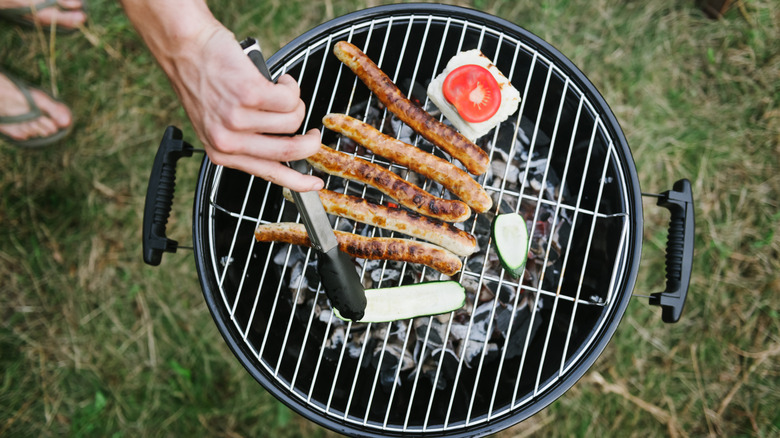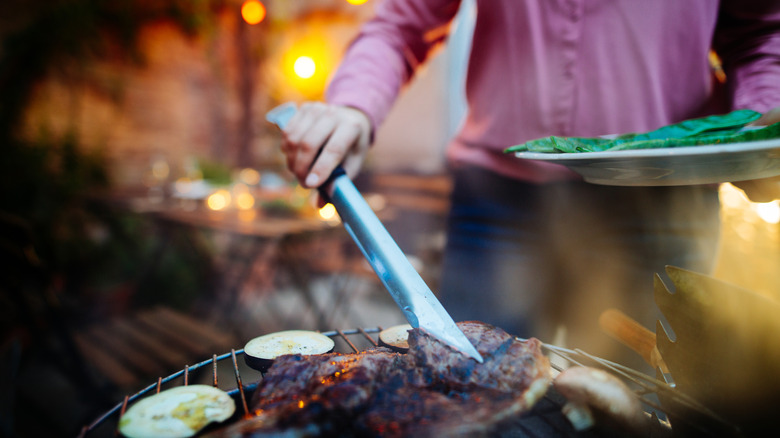The Tell-Tale Sign Your Coal Fire Grill Is Ready To Barbecue
Whether you're going for a smoky carne asada or a charred corn on the cob, working with a charcoal grill can be challenging but rewarding. Unlike an oven, most grills won't give you a heads up on the temperature, leaving you to wade aimlessly through clouds of smoke and the occasional flare-up. There is, however, a foolproof way to know whether your grill is hot enough to begin the barbecue process: checking the color and state of your coals.
If you're going for high, direct heat, keep an eye out for glowing red and white coals. If you're going for medium or indirect heat, look for light gray, ashy coals. Keeping track of the time can also help. It may take 10 or 15 minutes to achieve high heat and roughly half an hour for medium heat.
One thing to avoid? Cooking over black coals. At this stage, they are simply not ready to cook, and there's zero benefit in poking at a hunk of meat as it slowly turns limp and chewy over a lukewarm grill.
Direct and indirect heat
One of the many pros of a charcoal grill — aside from its unmistakably smoky flavor — is its ability to cook over direct or indirect heat. It's critical to know which form of heat you're seeking. A sear on a medium-rare flank steak, for instance, is vastly different than a gently smoked rack of ribs.
Your glowing red or white-hot coals are the perfect vessel for direct heat, which should be used for smaller items like cheeseburgers and thin cuts of steak. These foods don't take long to cook adequately at high temperatures. Additionally, that more intense heat will leave an incredible char.
When grilling heftier cuts of meat, like ribs or a whole chicken, it's better to rely on indirect heat. This gives the meat more time to cook thoroughly without drying out to the rubbery point of no return. The best part is that you can use both heat levels at once If you employ the two-zone grilling method: By piling your charcoals on one side — the direct heat side — you'll build up enough thermal energy to impart indirect heat onto the remaining side of the grill.

